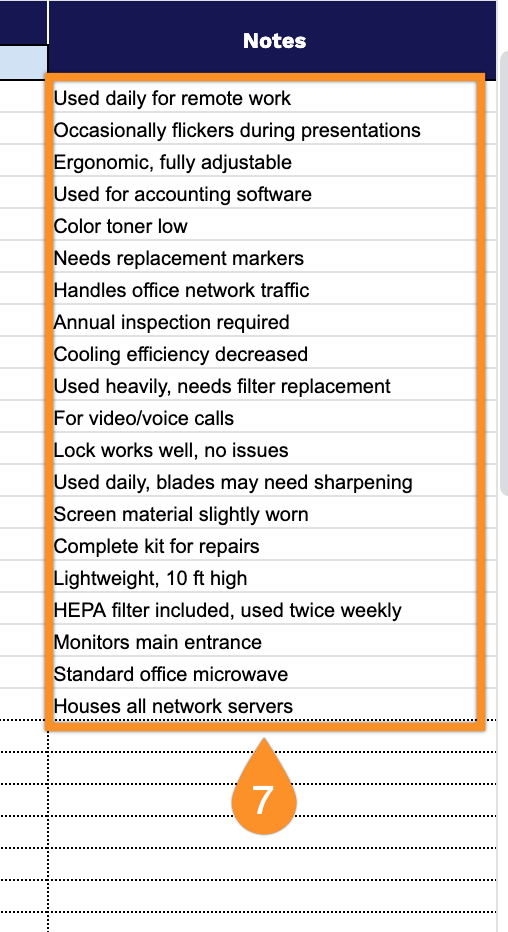Keeping track of equipment can feel overwhelming, especially when you’re juggling multiple locations, different types of assets, or a growing inventory.
Whether you’re managing office computers, construction tools, medical devices, or manufacturing equipment, having a solid inventory system helps you stay organized, plan for maintenance, and avoid the frustration of missing items.
Our free equipment inventory spreadsheet template is designed to simplify your workflow. Available in Google Sheets, Excel, and PDF formats, it works for any size operation.
Small businesses can use it to track a few dozen items, while larger organizations can manage thousands of assets across different sites.
The best part? You can download it right now, adjust it to fit your specific needs, and start getting organized today.
Quick Jump
ToggleWhat Is an Equipment Inventory Spreadsheet?

An equipment inventory spreadsheet is a simple digital file that helps businesses keep track of their physical equipment and tools.
Organizations use these spreadsheets to stay organized, track the equipment they have on hand, and plan for maintenance or replacements as needed.
Download Spreadsheet Daddy’s Free Equipment Inventory Management Spreadsheet
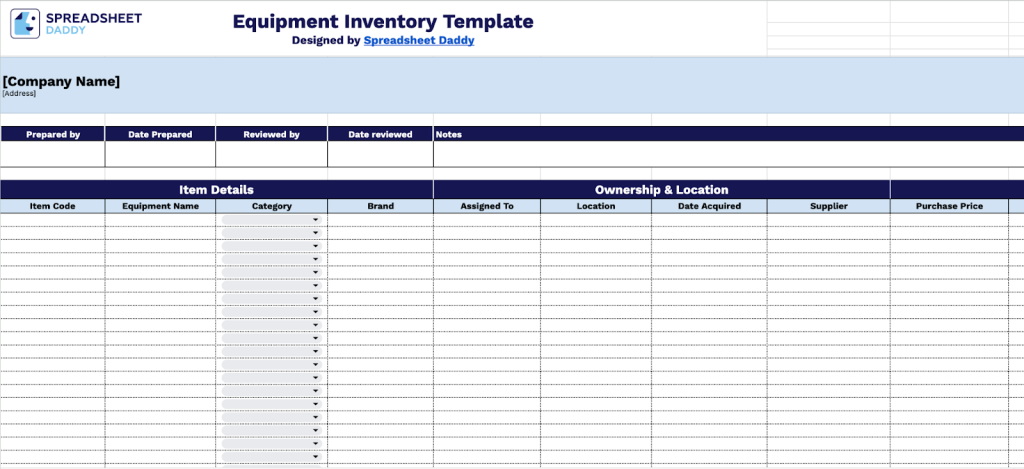
Our equipment inventory template helps you keep track of all your equipment in one place.
The template provides a clear view of your equipment, allowing you to stay on top of warranties, conditions, and when maintenance is needed.
You can easily customize the template by adding or removing columns as needed to fit your specific tracking requirements.
What’s included
- Complete equipment tracking setup: The template provides a clean and organized way to record all your equipment, featuring a professional company header at the top and a comprehensive tracking table below. Each piece of equipment is assigned its own Item Code, Equipment Name, Category, and Brand designation, allowing you to manage everything in your facility easily.
- Complete ownership and location management: Track exactly where your equipment is and who’s responsible for it with dedicated fields for Assigned To, Location, Date Acquired, and Supplier information. This keeps you organized, whether the equipment is spread across multiple sites or departments.
- Built-in financial and warranty tracking: Monitor your equipment investments with columns for Purchase Price, Current Value, Warranty Information, and Insurance Details. You’ll always know the value of your equipment and when warranties expire, without having to dig through old paperwork.
- Proactive maintenance scheduling system: Stay on top of equipment upkeep with Condition tracking, Next Service Due dates, and Service Provider information. This helps you plan for maintenance before problems arise and keeps all your service records in one place.
- Professional documentation structure: The template includes proper documentation fields, such as Prepared by, Date Prepared, Reviewed by, Date Reviewed, and Notes sections, along with customizable company information at the top, for a well-organized inventory system that presents a professional appearance.
How to Use Our Equipment Inventory Spreadsheet Template
1. You can implement this template by copying the Google Sheets document or exporting it to Excel or PDF formats.
2. Input your business name, street address, and inventory specialist credentials with the finished date. Record the oversight manager’s identity and evaluation date. Employ the Notes section to note critical observations.

3. Complete the Item Details section by entering all essential identification and classification information:
- Item Code: Enter the unique identifier assigned to track this specific piece of equipment in your inventory system.
- Equipment Name: Record the complete name or model designation of the equipment being cataloged.
- Category: Specify the classification type that groups this equipment with similar items (office equipment, machinery, vehicles, IT hardware, etc.).
- Brand: Include the manufacturer or brand name of the equipment for identification and warranty purposes.
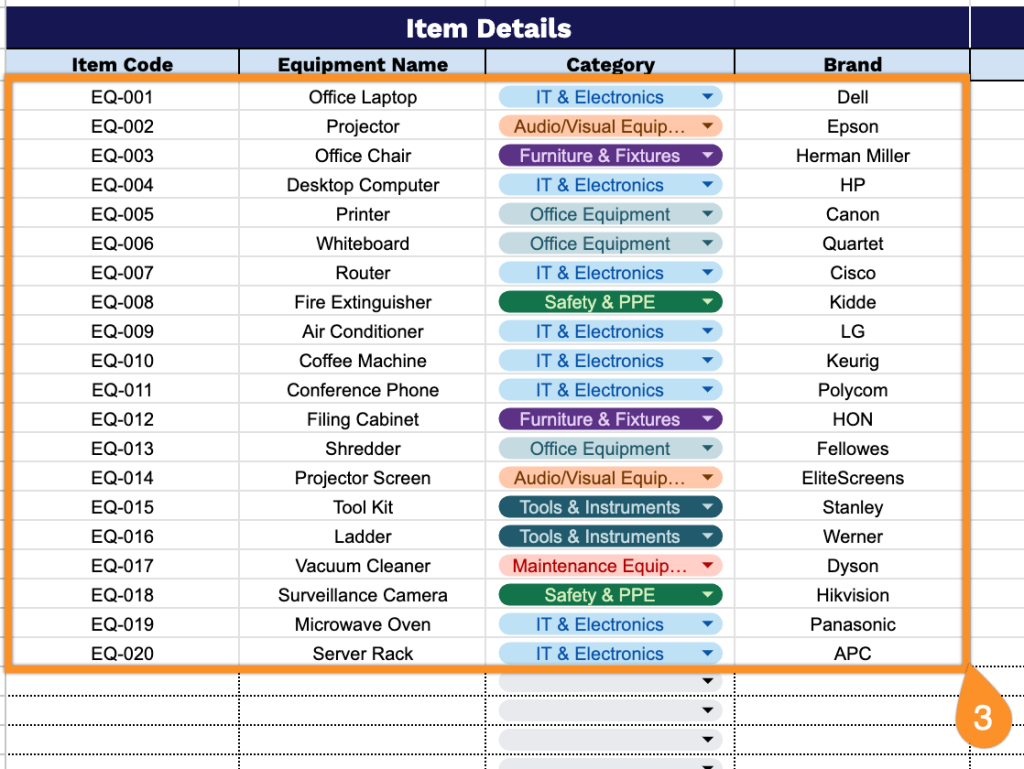
4. Fill in the Ownership & Location section by documenting all assignment and acquisition details:
- Assigned To: Enter the name of the employee, department, or individual responsible for this equipment.
- Location: Provide the specific physical location where the equipment is stationed (building, room number, department, etc.).
- Date Acquired: Record when the equipment was purchased or received by the organization.
- Supplier: Include the vendor or company name from whom the equipment was purchased or leased.
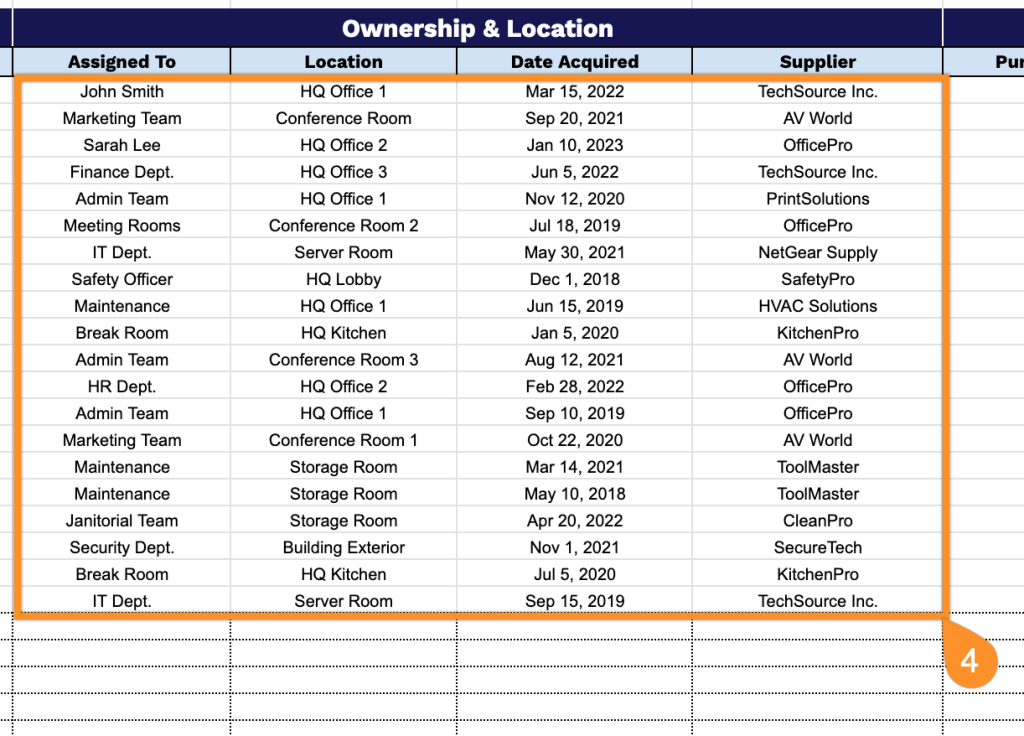
5. Document the value information in the Financial Information section for accurate asset valuation:
- Purchase Price: Enter the original cost paid for acquiring this equipment.
- Current Value: Record the present-day estimated worth or depreciated value of the equipment.
- Warranty Information: Include warranty duration, coverage details, and expiration dates for manufacturer protection.
- Insurance Details: Add policy numbers, coverage amounts, and insurance provider information for this asset.

6. Manage equipment condition in the Maintenance & Status section by tracking service requirements and operational status:
- Condition: Specify the current operational state of the equipment (new, good, fair, poor, out of service, etc.).
- Next Service Due: Record the scheduled date for the next required maintenance or inspection.
- Service Provider: Enter the name of the company or technician responsible for maintaining this equipment.
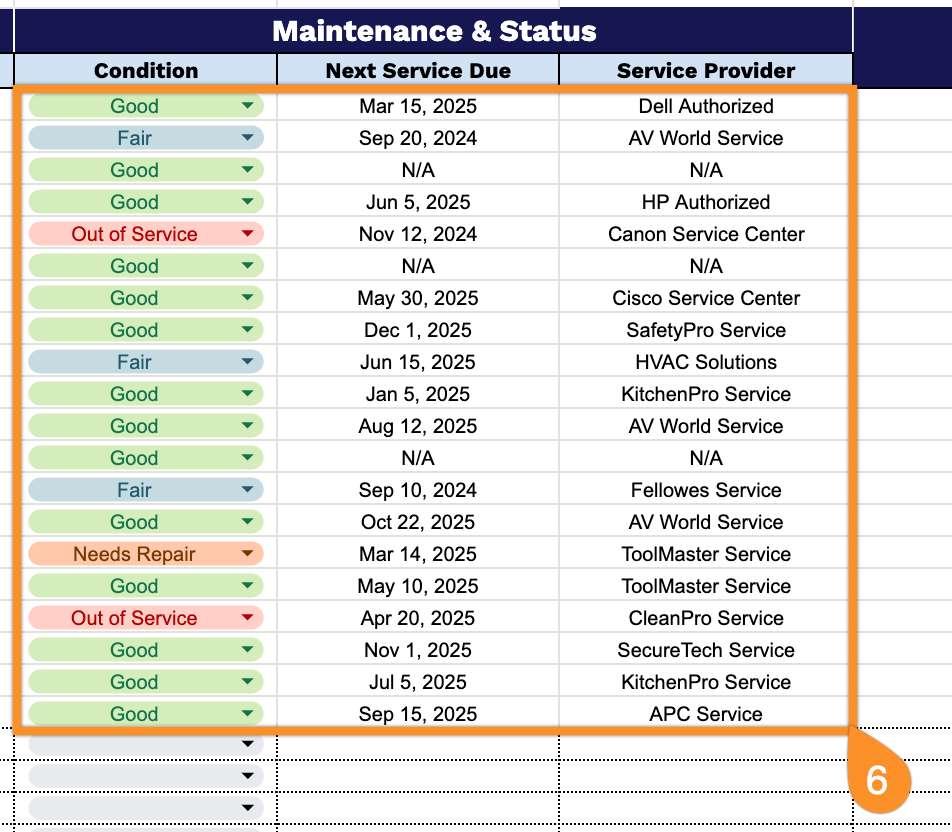
7. Include supplementary details or observations in the Notes field.
